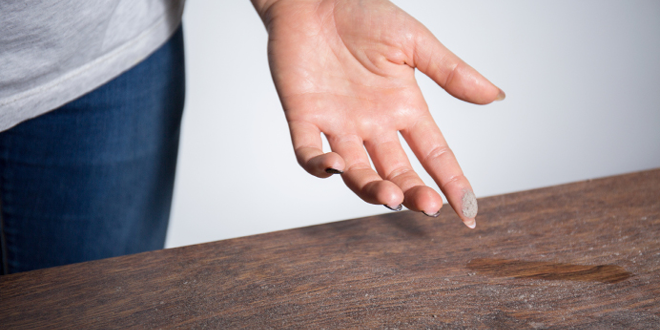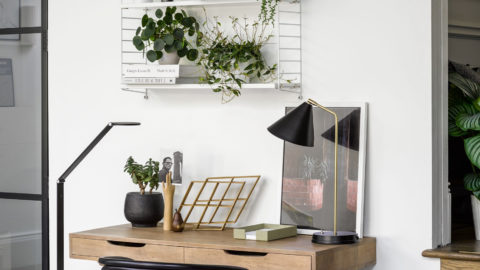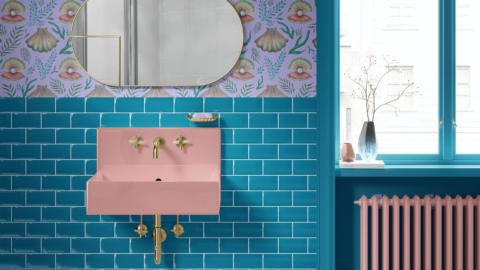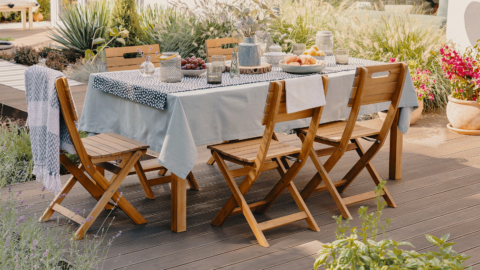Simple Ways To Make Your Home Allergy-Friendly

Increasing numbers of us are suffering from allergies associated with the home; tackling allergy causes can be easier than you may think. This month we’ve got tips for trying to keep allergens at bay and ways in which you might be able to reduce pollen and dust which all too often lead to allergies.
Avoid chemicals
If you or a member of your family suffers from allergies, it is a good idea to avoid harsh chemicals like ammonia when you buy cleaning products. Some furniture polishes, detergents and fabric softeners contain chemicals which can exacerbate an allergy. Instead, opt for eco-friendly products, or even make your own! Using kitchen stock items such as baking soda, vinegar and lemon you can really clean-up!
Thorough cleaning
You don’t need to be a Kim or Aggie from TV show How Clean Is Your House? However, if you do suffer from an allergy, it is worth cleaning your home thoroughly once or twice a week. When buying a vacuum cleaner, look out for a quality high-efficiency particulate arrestance (HEPA) filter which has a far higher success rate of picking up tiny allergens that other vacuums often simply disturb but not fully gather up.
Reduce clutter
At any time of year but especially during the pollen season, it is a good idea to clear away as much clutter as possible. That can be extra cushions, boxes of clothes or other items which take up
space and gather dust – by making space you can make it more difficult for allergens to attach themselves.
Mould-free bathrooms
To prevent a lot of allergies from triggering keep your bathroom clean and mould-free – scrub tiles regularly and make sure to regularly clean the shower curtains. Good quality shower curtains can be washed in a washing machine, and it is a smart idea to towel-dry the bathtub and wet areas once you’ve used it to prevent mould from building up and it will also help to keep the air from being too humid.
Dust properly
Dusting is a simple but effective way of ridding the home of allergens, however, for it to be a success you need to do it properly. Try using a damp cloth so that allergens can stick to the cloth instead of lifting the cloth into the air only to fall back down onto the surface which you have just ‘cleaned’.
Clean bedroom
With most of us sleeping anything between six and nine hours a day, it’s important to minimise the allergens in our bedroom. During the height of hay fever season make sure you wash your sheets at least once a week in hot water and dry them indoors. Your mattresses collect dust – home for dust mites which cause severe allergies. Make sure you professionally clean your mattresses at least once every six months. If you have children, think about washing their soft, cuddly toys regularly as these can collect and harbour allergens in the bedroom and wider home.
Stay pollen-free
During the hay fever season, it is important to keep the level of pollen you transfer to your home down as it’s likely you’re in-and-out of the home. One quick fix is placing a doormat outside your front door and ask guests to take their shoes off as they enter your home. It’s a good idea to change your clothes when you get home from work or a day out as pollen can settle on clothes and be transferred easily.
Window management
It’s challenging to predict the pollen that you or someone in your house is allergic to. It’s best to manage when to and not to open your windows. As a general rule plants pollinate between 5.00am and 9.00am, so it is a good idea to close windows at those times and open them at sunset when the levels of pollen are at their lowest. If possible use air-conditioning units during the hay fever season to avoid allergens.
Pet care
Allergens like dust and pollen settle on animal fur which means as soon as the animals come indoors so do the allergens. Before letting pets in, the best thing to do is to give your pet a thorough brush and make sure you vacuum your home at least a couple of times a week and avoid pets in your bedroom.
By Jacob White






